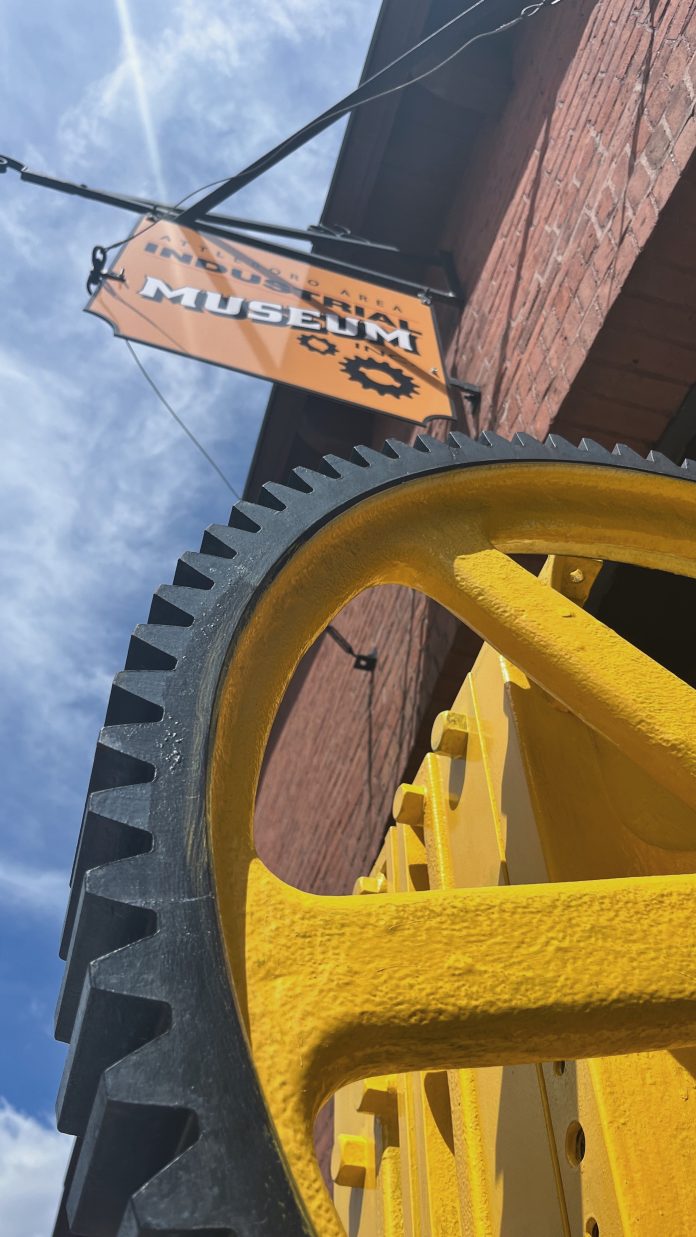By Geena Monahan—For the North Star Reporter
Originally incorporated on July 4, 1975, as part of the City of Attleboro’s bicentennial celebration, the Attleboro Area Industrial Museum invites the public to a community-wide celebration of its 50th anniversary.
Located at 42 Union St. in Attleboro, the free event will run from 10 a.m. to 4 p.m on Sunday, July 27, and feature a variety of presentations and new exhibits.
“This event is not just a celebration of the museum’s past, but a chance to dramatically impact the museum’s future,” said Executive Director Victoria Antonucci.
Programming is set to begin around 11 a.m., featuring presentations from the Attleboro Preservation Historic Society, local journalist Richard Foster, former director Carleton Legg and the Attleboro Sustainability Commission. Presentations will run for 20 to 30 minutes, and occur every hour throughout the event.
The USA Ninja Challenge from Norton will be in attendance with tumble mats for the smaller spectators to play on, along with the Illuminate Arts Company, a local theater group for children.
In conjunction with Education Coordinator Niko Feeney, Antonucci said a STEAM event will take place where children can make a metal pendant stamped with their initials, connecting back to Attleboro’s jewelry-making history. An ice cream cart and refreshments will be available throughout the day.
According to Antonucci, museum programs are made possible by donations and grants made throughout the year. A goal of $100,000 has been set for 2025, and longtime donors Rose and Bill Larson have pledged a $50,000 matching gift. As of the beginning of July, the museum has raised 25% of its goal, and anyone wishing to make a contribution can do so in person at the anniversary celebration, or online at industrialmuseum.com.
“We’re making pretty good progress on that; it’s very exciting to see the community turn out and support all of the work we’re doing and help us continue to expand all of our outreach,” said Antonucci. “When people are able to donate in whatever capacity they can, it validates our work, but it also just speaks to the fact that there is an appetite to invest in the local community, and that’s what a small museum like ours is all about.
Currently, the museum has around 75 members and Antonucci hopes that in honor of the anniversary, 50 more members can be added.
North Attleborough’s Industrial History
Although North Attleborough didn’t separate from Attleboro until 1887, it still left a substantial mark on the industrial revolution, specifically in the realm of jewelry and silver manufacturing. According to a 174-page “Town of North Attleborough Historic Plan” put forth by the North Attleborough Historical Commission in 2017, the town boasted 23 jewelry factories that sold products both domestically and abroad in the late 19th and early 20th centuries.
“Between 1809 and 1813, five major cotton mills were built along the Ten Mile River and, by 1858, jewelry was a booming industry,” reads the historic plan, explaining how North Attleborough’s location helped bolster its economic development during this time.
One such manufacturing hub, now home to the police headquarters, was the H.F. Barrows Manufacturing Company Building. What started in 1853 as a small shop in Attleborough Falls run by Henry F. Barrows turned into a jewelry factory built by his sons at 102 South Washington St. in 1902.
The Webster Mill on Broadway Street, which is slated to be cleaned up by the state Environmental Protection Agency, was another important part of the town’s silver industry.
According to North Attleborough’s Historical Commission, G.K. Webster & Co. was founded by George K. Webster in 1869 and produced sterling silver, which included products such as flatware, napkin rings, candlesticks and thimbles. The company’s sterling silver can still be found today and is identified by the Webster hallmark: the letter W with a feathered arrow flying through its center.
In addition to its permanent exhibits for the area’s textile industry, tools used by silversmiths in the pre-Civil War era and display of Super Bowl trophies and rings made by Attleboro’s own L.G. Balfour, the Attleboro Area Industrial Museum also keeps space available for revolving exhibits, such as the recent “Jewelry Manufacturers of Attleboro: Birthplace of Jewelry Manufacturing in the United States.”
“I think change happens on a local level, and being able to connect to your community and understand not just the history of your own friends, family and life, but of the community you live in is really important,” said Antonucci. “The industrial museum is really focused on being able to preserve and share those stories so that a family that has just moved into town, and a family that has been here for six generations, can still feel that same connection to the area and what it means to be from this part of the state.”

